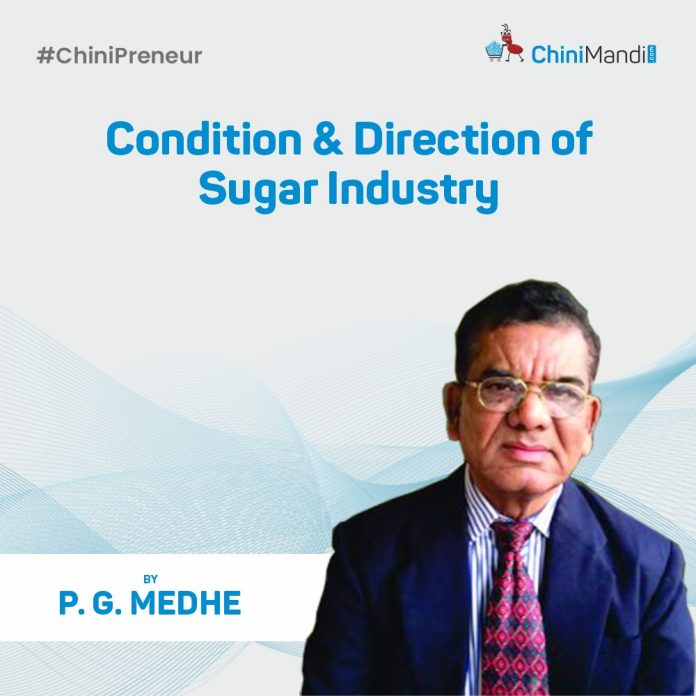As Maharashtra’s sugarcane industry continues to thrive, a concerning trend has emerged – a noticeable reduction in the physical strength of sugarcane harvesting laborers. This decline not only poses challenges to the efficiency of harvesting operations but also raises questions about the well-being and livelihoods of these workers. In this article, we delve into the factors contributing to this decline and propose strategies to mitigate its impact. By understanding the root causes and implementing proactive measures, we aim to ensure the sustainability of both the industry and the labor force it relies upon.
CONVENTIONAL SYSTEM OF SUGARCANE HARVESTING BY LABOURERS: The conventional system of sugarcane harvesting in Maharashtra has long relied on manual labor, with workers utilizing traditional tools such as sickles and machetes to cut down the cane. This labor-intensive method involves significant physical exertion as laborers navigate through the dense fields, cutting and gathering the mature cane stalks.
Despite its longstanding use, this system is facing challenges, particularly in the context of declining strength among laborers. Factors such as inadequate nutrition, long working hours, and repetitive tasks contribute to fatigue and reduced physical capacity among workers. Additionally, the aging workforce and limited access to healthcare further exacerbate these challenges.
While mechanized harvesting techniques have gained traction in some regions, the rugged terrain and small landholdings prevalent in Maharashtra present obstacles to widespread adoption. As a result, the reliance on manual labor persists, highlighting the need to address the concerns surrounding the well-being and productivity of sugarcane harvesting laborers in the region.
In light of these considerations, it becomes imperative to explore strategies that not only enhance the efficiency of sugarcane harvesting but also prioritize the welfare of the labor force. From mechanization initiatives tailored to local conditions to holistic approaches addressing nutrition and healthcare, there exists a spectrum of solutions to ensure a sustainable and equitable future for all stakeholders involved in Maharashtra’s sugarcane industry.
PRESENT SYSTEM OF HARVESTING AND TRANSPORT OF SUGARCANE
According to the Sugarcane Control Orders, Fair and Remunerative Price (FRP) of the sugar cane is fixed on ex Gate Sugar Factory basis and hence sugarcane grown by the producers has to harvest and transport up to the mills gate. Such a system is prevalent in all the States except Gujarat, Maharashtra and Karnataka. In our State of Maharashtra, Sugar factories are taking the responsibility of sugarcane harvesting and transport on behalf of sugarcane producers. For this work, required labourers are acquired through Mukadama’s from the drought-prone district areas of Beed, Osmanabad, Sangola, Jat etc. by entering into contracts with the factories before the commencement of the crushing season. As per the contract, the advance amounts are paid on a vehicle-wise basis, labourers Troops basis as well as taking into consideration the harvesting work done during the last season. The amount of such advances are in crores of rupees. Factories pay such advance amounts by raising loans from the banks.
Around 60,000 vehicle owners, 50,000 to 55,000 Mukadams and about 10,000,000 harvesting workers are employed in the 200 sugar factories around the State of Maharashtra.
During the last 2/3 years, the percentage of rainfall in the drought areas recorded satisfactory. Therefore, the availability of water in these droughty areas has increased and the labour force is usually utilised for cane harvesting work, engaging in their own field at their native place. Similarly Children of laborers are not available for sugarcane cutting work as they are educated, establishment of new MIDC’s, fast growing Construction works, advanced technology and job opportunities at the local level have started to emerge.
Hence, the new generation is reluctant for cane harvesting work Which has resulted in non availability of the sufficient labour force for cane harvesting and the labor shortage has started to appear. Hence, there is no option but to do the work of sugarcane harvesting by machines. But there are some problems with this option too. Lands are being fragmented due to Bhau Bandaki. Harvesting of sugarcane into small pieces of land by harvester machines becomes difficult. Almost 80 percent of the farmers are landholders within 1 acre of land. The area of land under sugarcane cultivation has been increasing day by day due to fixed and guaranteed income from cane crop. On the contrary, the strength of the harvesting labourers is reducing day by day.
DECEPTIVE INCIDENTS FROM THE MUKADAMS LEADING TO LOSSES TO FACTORIES :
The sugarcane industry faces challenges such as a decrease in the strength of sugarcane harvesting laborers and the necessity to provide significant advances to labor brokers (Mukadams) during off-season agreements for labor supply. Unfortunately, there has been a rise in deceptive incidents, leading to the inability to recover these advanced payments, resulting in losses for factories. This highlights the need for improved risk management strategies and transparency within the industry to mitigate such losses.
MAIN REASONS FOR REDUCTION IN STRENGTH
The decline in sugarcane harvesting laborers from regions like Vidarbha, Marathwada, Bid, Osmanabad, and other parts of Maharashtra can be attributed to various socio-economic factors.
Educational Development: As educational opportunities improve in these areas, more young people are opting for formal education rather than manual labor. They aspire for better career prospects that require higher levels of education.
Industrial Development and MIDC’s: The establishment of industrial areas and Maharashtra Industrial Development Corporations (MIDCs) provides alternative employment opportunities beyond agriculture. Industries offer more stable and often better-paying jobs compared to seasonal agricultural work.
Changing Aspirations of the New Generation: The younger generation, exposed to urban lifestyles and influenced by media, may not see sugarcane cutting as a desirable or prestigious profession. They may prefer jobs in sectors like technology, healthcare, finance, or entrepreneurship.
Mechanization of Agriculture: The introduction of mechanized farming techniques reduces the demand for manual labor in agriculture, including sugarcane harvesting. Farming machinery can accomplish tasks more efficiently and with less manpower.
Migration: Some laborers may migrate to urban areas or other regions in search of better opportunities, leaving behind traditional agricultural work.
Improved Infrastructure and Transportation: Better infrastructure and transportation networks make it easier for people to commute to urban areas for work, further reducing the pool of available labor in rural agricultural sectors.
These changes have significant implications for the agriculture sector, particularly for sugarcane farmers who rely on manual labor for harvesting. Farmers may need to adopt mechanized harvesting methods or explore alternative crops that require less labor-intensive practices. Additionally, there may be a need for government intervention to provide skill development programs, promote entrepreneurship, and support the agricultural sector in adapting to these changing dynamics.
REPERCUSSIONS OF REDUCED STRENGTH OF HARVESTING LABOURERS
The shortage of laborers in the sugarcane industry can have significant repercussions, leading to an increase in per-ton sugarcane harvesting costs. This situation is exacerbated by the pressing demands from labor unions for revisions in harvesting rates. Let’s delve into the details:
IMPACT ON COST : With fewer laborers available for harvesting, the demand for those remaining increases. This drives up labor costs as sugar factories compete to secure the limited workforce. The shortage of laborers can result in delays in harvesting, leading to losses in yield due to overripe or spoiled sugarcane. These losses further contribute to increased per-ton harvesting costs. Sugar factories may need to invest in additional recruitment efforts or incentives to attract and retain laborers, adding to operational expenses.
Pressure from Labor Unions : Labor unions often advocate for better wages, working conditions, and benefits for their members. In the context of sugarcane harvesting, unions may demand revisions in harvesting rates to reflect the increased cost of living, inflation, or other economic factors. Negotiating with labor unions for higher harvesting rates can further inflate costs for sugar factories, especially if they are already facing financial pressures due to the labor shortage.
Impact on Industry Competitiveness: The rise in per-ton sugarcane harvesting costs can make sugar production less competitive compared to other industries or regions with lower labor costs.
LONG TERM SOLUTIONS :
1) Mechanization: Investing in mechanized harvesting equipment can help reduce reliance on manual labor and mitigate the impact of labor shortages on costs.
2) Development: Providing training programs to enhance the skills and efficiency of existing laborers can improve productivity and reduce the need for additional workforce.
3) Sustainable Wage Policies: Implementing fair and sustainable wage policies that balance the needs of laborers with the financial viability of sugar factories can help mitigate labor-related cost pressures.
4) Government Intervention: Government policies and subsidies aimed at addressing labor shortages or supporting the sugarcane industry can provide relief to sugar factories facing increased harvesting costs.
Regulatory frameworks that facilitate dialogue between industry stakeholders, including labor unions, can help negotiate fair and mutually beneficial agreements.
In conclusion, the shortage of laborers in the sugarcane industry, coupled with demands from labor unions for revisions in harvesting rates, poses significant challenges for sugar factories. Addressing these challenges requires a multi-faceted approach that considers mechanization, training, sustainable wage policies, and government intervention to ensure the long-term viability of the industry.
REDUCTION IN CRUSHING DAYS
The reduction in sugarcane crushing days from 160 to 120 due to increased strength of sugar factories signifies a shift towards more efficient operations. This could be attributed to advancements in technology, improved machinery, or streamlined processes that enable factories to process sugarcane at a faster rate. As a result, sugar factories are compelled to harvest registered sugarcane within a shorter timeframe to meet their production targets and minimize overhead expenses.
To address the challenge of reduced sugarcane harvesting laborers, alternative harvesting arrangements need to be investigated. Here are some potential solutions to mitigate this problem:
1) Mechanized Harvesting: Investing in mechanized harvesting equipment such as sugarcane harvesters can significantly increase harvesting efficiency and reduce reliance on manual labor. These machines are designed to cut and gather sugarcane quickly, reducing the need for a large workforce.
2) Contract Farming: Sugar factories can engage in contract farming agreements with local farmers to ensure timely harvesting of sugarcane. Farmers can be incentivized to adhere to strict harvesting schedules through contracts that offer favorable terms and pricing.
3) Training Programs: Implementing training programs for sugarcane farmers and laborers on modern harvesting techniques can enhance productivity and efficiency. This can include proper handling of machinery, efficient harvesting practices, and safety protocols.
4) Community Engagement: Collaborating with local communities and labor unions to address concerns and find mutually beneficial solutions. This could involve providing assistance with mechanization, offering training programs, or facilitating alternative employment opportunities.
5) Technological Solutions: Exploring innovative technological solutions such as drones for crop monitoring, GPS-guided machinery, or mobile apps for scheduling and coordination can improve efficiency and optimize resource allocation in sugarcane harvesting.
6) Research and Development: Investing in research and development to develop new varieties of sugarcane that are easier to harvest mechanically or are more resistant to pests and diseases, reducing the need for manual intervention.
By exploring these alternative harvesting arrangements, sugar factories can adapt to the changing landscape of sugarcane processing while ensuring sustainable and efficient operations.
PROBLEMS IN USE OF MECHANISED HARVESTERS : The transition from manual to mechanized harvesting in sugarcane cultivation poses several challenges for small landholding farmers in Maharashtra:
1) Initial Investment Cost : Acquiring mechanized harvesters entails a significant upfront investment, which may be prohibitive for small-scale farmers with limited financial resources. Purchasing or leasing such equipment requires capital that may not be readily available to them.
2) Operational Costs: In addition to the initial investment, operating and maintaining mechanized harvesters incur ongoing expenses. This includes fuel, maintenance, repairs, and skilled labor for operating the machinery. Small farmers may struggle to bear these operational costs, especially during periods of low or fluctuating income.
3) Field Accessibility: The rugged terrain and irregularly shaped plots common in small landholdings can pose challenges for mechanized harvesters. These machines require relatively flat and uniform fields to operate efficiently. However, many small farms in Maharashtra have uneven terrain, narrow pathways, and obstacles that hinder the maneuverability of large equipment.
4) Crop Variability : Sugarcane crops vary in maturity and density across fields, requiring adaptable harvesting techniques. Mechanized harvesters may struggle to effectively harvest crops with uneven growth or lodged stalks. Small farmers often lack the resources to address these variations, leading to suboptimal harvesting outcomes and potential crop losses.
5) Customization and Adaptation : Mechanized harvesters need to be customized and adapted to suit the specific needs and conditions of each farm. Small farmers may face challenges in accessing and affording customized equipment tailored to their landholding size and topography. Off-the-shelf solutions may not always be suitable for their requirements, further complicating the adoption process.
6) Skills and Training : Operating mechanized harvesters requires specialized skills and training. Small-scale farmers and their laborers may lack the technical expertise needed to efficiently use and maintain these machines. Training programs and support services for smallholders are essential to ensure the successful adoption and utilization of mechanized harvesting technology.
7) Transition Period : Transitioning from manual to mechanized harvesting represents a significant change in farming practices and workflows. Small farmers may encounter resistance or reluctance to embrace new technologies, especially if they have been reliant on traditional methods for generations. Overcoming this inertia requires targeted education and support to demonstrate the benefits and feasibility of mechanization.
Addressing these challenges requires a holistic approach that considers the socio-economic context of small-scale farming in Maharashtra. Support mechanisms such as subsidies, access to credit, technical assistance, and farmer cooperatives can help alleviate the barriers to adopting mechanized harvesting technology and empower smallholders to enhance their productivity and sustainability in sugarcane cultivation.
USE OF SMALLER CAPACITY: Introducing smaller capacity sugarcane harvesters tailored to suit the needs of small landholding farmers in Maharashtra presents a viable solution to the challenges they face in adopting mechanized harvesting. Small landholding farmers in Maharashtra often encounter obstacles in adopting mechanized harvesting due to the unsuitability of conventional, large-scale harvesters to their farming conditions. To address this gap, the development and deployment of smaller capacity sugarcane harvesters offer a promising solution. These compact machines are designed to efficiently harvest sugarcane on small plots of land while minimizing the challenges associated with larger equipment.
Key Features and Benefits:
1) Compact Design: Smaller capacity harvesters are engineered to navigate through narrow pathways and maneuver in confined spaces typical of small farms. Their compact design ensures accessibility to fields with irregular shapes and challenging terrain, enhancing operational efficiency.
2) Adaptability: These harvesters are equipped with adjustable components and adaptable features to accommodate variations in crop density, maturity, and field conditions. Farmers can customize the settings to optimize harvesting performance according to their specific requirements, maximizing yield and minimizing crop losses.
3) Cost-Effectiveness: Compared to larger harvesters, smaller capacity models offer a more affordable investment option for small-scale farmers. Their lower upfront costs and reduced operational expenses make mechanized harvesting more accessible and financially viable for farmers with limited resources.
4) Ease of Operation: Simplified control systems and user-friendly interfaces ensure ease of operation, enabling farmers and their laborers to quickly learn and master the use of the equipment. Training programs and technical support services further facilitate the adoption process, empowering farmers to harness the benefits of mechanization effectively.
5) Versatility: Beyond sugarcane harvesting, these compact harvesters can be adapted for use in other crops and agricultural activities, enhancing their versatility and utility throughout the farming cycle. This multi-functionality increases the return on investment and promotes year-round utilization of the equipment.
6) Efficiency and Productivity: Smaller capacity harvesters offer comparable efficiency and productivity to their larger counterparts while catering to the specific needs and scale of small landholding farms. By streamlining the harvesting process and reducing labor requirements, these machines contribute to increased output and profitability for farmers.
Considerations for Implementation:
1) Research and Development: Continued investment in research and development is essential to refine and improve the design, performance, and durability of smaller capacity sugarcane harvesters. Collaboration between agricultural engineers, manufacturers, and farmers ensures that the equipment meets the evolving needs and challenges of small-scale farming.
2) Accessibility and Affordability: Efforts should be made to make smaller capacity harvesters readily accessible and affordable to small landholding farmers through subsidy programs, financing options, and incentives. Government support and private sector initiatives play a crucial role in facilitating widespread adoption and diffusion of the technology.
3) Capacity Building: Training and capacity building initiatives are integral to equip farmers with the knowledge and skills required to effectively operate, maintain, and troubleshoot the equipment. Extension services, demonstration farms, and farmer cooperatives serve as valuable platforms for knowledge sharing and skill development.
4) Policy Support: Policy frameworks and regulations should be conducive to the adoption and utilization of smaller capacity sugarcane harvesters, promoting innovation, investment, and entrepreneurship in agricultural machinery manufacturing. Incentives for research, development, and adoption of sustainable farming technologies further encourage progress in this field.
Smaller capacity sugarcane harvesters represent a practical and sustainable solution to enhance mechanized harvesting on small landholding farms in Maharashtra. By addressing the unique challenges and requirements of small-scale farmers, these compact machines contribute to improved efficiency, productivity, and livelihoods in sugarcane cultivation. Through collaborative efforts and targeted interventions, the widespread adoption of smaller capacity harvesters can drive positive transformation in the agricultural sector, fostering inclusive growth and resilience in rural communities.
CONSOLIDATED FARMING AT VILLAGE LEVEL…for use of mechanized harvesters : Formulating a “Consolidated farming policy at the village level” to integrate mechanized sugarcane harvesting can be a comprehensive approach to address various challenges and opportunities in agriculture. Here’s a detailed elaboration:
1) Understanding Local Context: The policy should begin with a thorough assessment of the village’s agricultural landscape, including the size of sugarcane cultivation, existing farming practices, infrastructure, and socio-economic factors.
2)Promotion of Mechanization: The policy should prioritize the adoption of mechanized sugarcane harvesting as a means to improve efficiency, reduce labor dependency, and increase productivity. This could involve providing subsidies or incentives for purchasing or leasing harvesting machinery.
3) Training and Capacity Building: Farmers and laborers need to be trained in operating and maintaining mechanized equipment. Training programs should be tailored to the specific needs and skill levels of the local community.
4) Infrastructure Development: Adequate infrastructure, such as access roads, storage facilities, and repair centers, is essential for the successful implementation of mechanized harvesting. The policy should include provisions for infrastructure development to support mechanization.
5) Financial Support: Access to credit and financial assistance is crucial for small-scale farmers to invest in mechanized equipment. The policy should explore options for providing low-interest loans or grants to facilitate the adoption of mechanization.
6) Environmental Sustainability: Mechanized farming should be carried out in a manner that minimizes environmental impact. The policy should include guidelines and incentives for implementing sustainable agricultural practices, such as proper land management and use of eco-friendly machinery.
7) Community Participation: Engaging local stakeholders, including farmers, agricultural cooperatives, and government agencies, is essential for the successful implementation of the policy. Participatory approaches can help ensure that the policy reflects the needs and priorities of the community.
8) Monitoring and Evaluation: Regular monitoring and evaluation mechanisms should be established to assess the impact of the policy on sugarcane production, farmer incomes, employment, and environmental sustainability. Feedback from stakeholders should be used to refine and improve the policy over time.
By formulating a consolidated farming policy at the village level that integrates mechanized sugarcane harvesting, policymakers can promote sustainable agricultural development, improve livelihoods, and enhance the competitiveness of the sugarcane sector.
CAREFUL PLANNING FOR SUGARCANE PLANTATION : Implementing sugarcane plantation methods suitable for using sugarcane harvesters involves careful planning and execution. Here’s a detailed exploration of the process:
1)Land Preparation: Prepare the land by plowing and harrowing to ensure a fine tilth, which promotes better root development and water infiltration. Remove any debris or weeds that may interfere with the planting process.
2) Consolidation of Land: Consolidating land at the village level involves combining smaller land parcels into larger contiguous plots. This consolidation allows for more efficient use of machinery and resources, including sugarcane harvesters. It also facilitates uniform management practices across the area.
3) Row Spacing and Planting: Optimal row spacing is essential for mechanized sugarcane harvesting. A row spacing of around 4 feet (1.2 meters) between two rows is suitable for most sugarcane varieties and accommodates the width of sugarcane harvesters. Planting in straight rows aids in the efficient movement of machinery.
3) Selection of Planting Material: Choose high-quality sugarcane planting material from disease-free, healthy sources. Setts or seed cane should be of uniform size and free from pests and diseases. Proper handling and storage of planting material are crucial to maintain viability and prevent contamination.
4) Planting Technique: Mechanized planting methods, such as using specialized sugarcane planters, can streamline the planting process. These machines ensure consistent seed depth and spacing between sets, optimizing crop establishment. Alternatively, manual planting can be done in conjunction with machinery for precision and efficiency.
5)Fertilization and Irrigation: Apply fertilizers based on soil test results and crop nutrient requirements. Adequate irrigation is crucial, especially during the establishment phase, to promote root development and canopy growth. Drip irrigation systems can deliver water and nutrients directly to the root zone, maximizing efficiency and reducing water wastage.
6) Weed and Pest Management: Implement integrated weed management practices to control weed competition and minimize herbicide use. Regular monitoring for pests and diseases is essential, and timely interventions, such as insecticide applications or disease-resistant varieties, can help mitigate risks.
7) Crop Maintenance: Regular cultural practices, including timely wedding, fertilization, and pest control, are necessary to maintain crop health and optimize yield potential. Monitoring crop growth and health throughout the growing season allows for adjustments in management practices as needed.
8) Harvesting : Sugarcane harvesters are used for mechanized harvesting once the crop reaches maturity. Harvesting at the right stage of maturity ensures maximum sugar content and yield. Proper maintenance and calibration of harvesters are essential for efficient operation and minimal losses.
9) Post-Harvest Handling: After harvesting, sugarcane is transported to processing facilities for milling and extraction of sugar and other by-products. Proper handling and transportation methods, such as using trailers or conveyor belts, help minimize losses and maintain cane quality.
By implementing these sugarcane plantation methods tailored for sugarcane harvesters, farmers can enhance efficiency, productivity, and profitability while reducing labor requirements and environmental impact. Collaboration at the village level can further optimize resource utilization and maximize the benefits of mechanization.
CONCLUSION : In conclusion, addressing the challenge of declining strength among sugarcane harvesting laborers in Maharashtra requires a multifaceted approach. Mechanized plantation methods, such as consolidating land at the village level and optimizing row spacing, offer promising solutions to improve efficiency and reduce labor intensity. Embracing technological innovations, coupled with sustainable agricultural practices and community-level collaboration, can pave the way for a resilient and prosperous sugarcane industry in Maharashtra. By prioritizing the well-being of laborers and harnessing the power of mechanization, stakeholders can navigate challenges and unlock new opportunities for growth and development in the sugarcane sector.
P.G. Medhe is the former Managing Director of Shri Chhatrapati Rajaram Sahakari Sakhar Karkhana Ltd and sugar industry analyst. He can be contacted at +91 9822329898.












